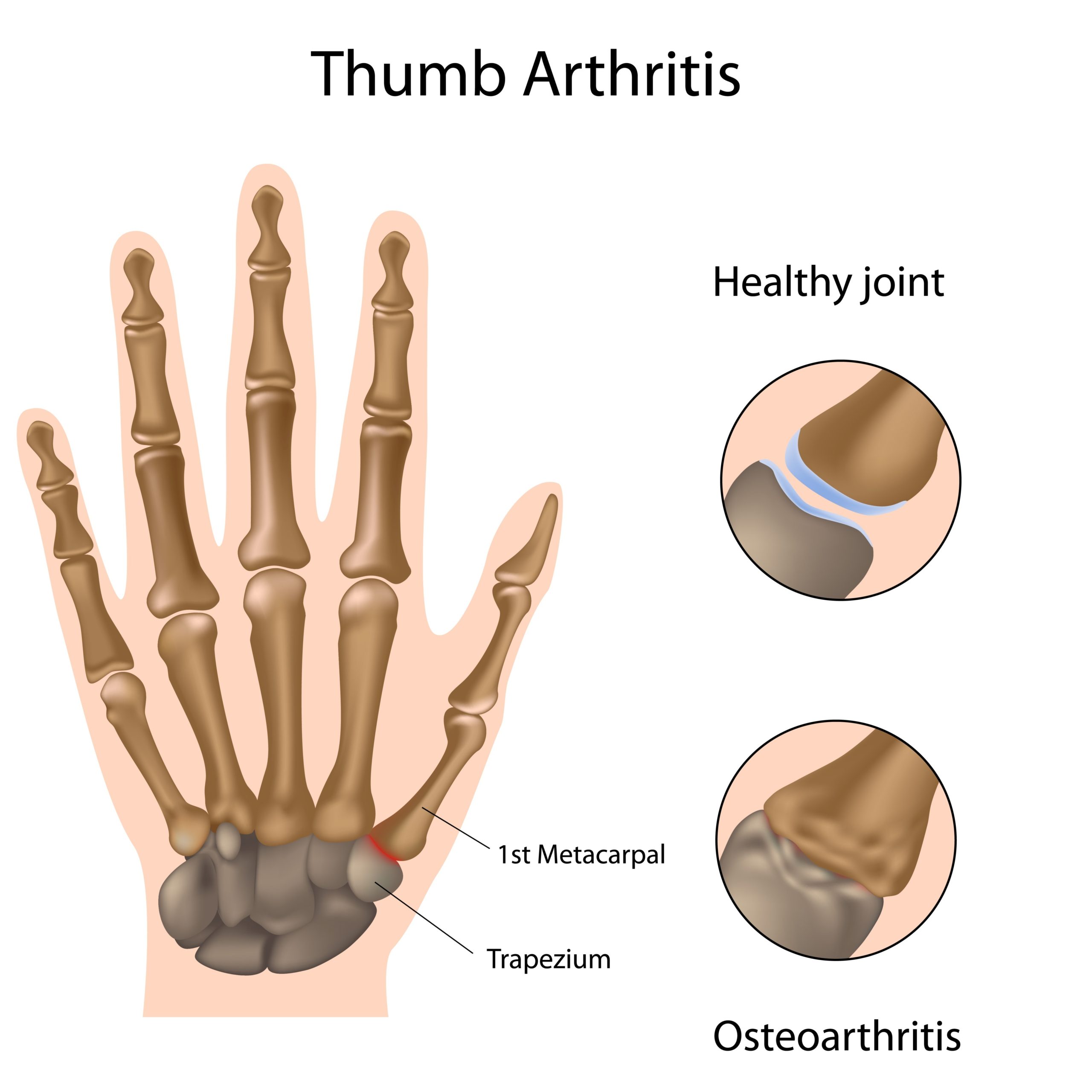Thumb Arthritis – Causes, Symptoms and Treatment


Thumb arthritis is an age-related problem. It occurs when the cartilage wears off from the base bones of the thumb that form the carpometacarpal (CMC) joint.
What do we need to know about thumb arthritis?
Cartilage is a connective tissue that acts as a cushion between two bones, it prevents friction between the bones. When the cartilage wears off, the bones rub against each other, causing damage, pain and inflammation in the joint. This condition is very painful, and it decreases the strength and mobility of the thumbs. Thumb arthritis is a type of osteoarthritis.
What are the symptoms of thumb arthritis?
Signs and symptoms include:
- Severe pain at the base of the thumb
- Difficulty in picking or grasping an object
- Unable to apply force with your thumb
- Decreased mobility in the thumb
- Enlargement of joint at the base of your thumb
What are the causes of thumb arthritis?
Thumb arthritis occurs in old age. It happens when the cartilage between the bones of the thumb deteriorates causing friction between the bones. This damages and causes inflammation in the carpometacarpal (CMC) joint of the thumb.
Thumb arthritis can also occur in people with prior history of thumb injury.
When do you need to see a doctor?
Immediately seek medical attention if you experience constant pain, swelling and stiffness in the thumb joint.
Request an appointment at Apollo Hospitals.
Call 1860-500-1066 to book an appointment.
What are the risk factors associated with thumb arthritis?
Risk factors include:
- People above the age of 40
- Obesity
- Hereditary conditions like malformed joint and ligament laxity
- Past thumb injuries
- Rheumatoid arthritis, though rare
- Excessive pressure on the thumb due to activities and jobs
What are the possible treatment options for thumb arthritis?
Treatment depends upon the severity of the condition. It involves:
- Medication: This could include topical medications to apply over the joint and painkillers.
- Splint: It supports the thumb joint and limits its movement. Splint also decreases the pain and helps in regaining the correct positioning of your joint.
- Injections: If medications and splints don’t work, then corticosteroid injections are given to reduce pain and inflammation.
- Surgery: Surgery is done as the last alternative, when there is almost no mobility in the thumb. There are different types of surgeries
- Arthrodesis: It involves fusion of bones of the affected joint.
- Osteotomy: Bones are repositioned to correct deformities.
- Arthroplasty: All or a part of the affected joint is removed and replaced with a graft from one of the tendons.
- Trapeziectomy: One of the bones in thumb joint (trapezium) is removed
Conclusion
Thumb arthritis can affect your quality of life. Consult a doctor and chalk out a treatment strategy depending upon the severity of the condition.
Frequently Asked Questions (FAQs)
How is this condition diagnosed?
Your doctor will first examine the thumb physically by gently pressing the thumb joint to see its mobility and then an X-ray will be done to get a better picture.
What are the complications associated with thumb arthritis?
Less or no improvement in the thumb mobility, limiting the quality of life
How long does it take to recover from hand surgery?
Recovery depends upon the severity and the type of surgery the patient had. It can generally take more than three months to recover.
Are there any home remedies to treat thumb arthritis?
Home remedies cannot treat the condition but can ease the pain. It includes:
- Use tools that put less pressure on the thumb for your daily activities.
- Apply ice and heat therapies to reduce the pain and inflammation of the joint.
© Copyright 2024. Apollo Hospitals Group. All Rights Reserved.
 +91 8069991061
Book Health Check-up
Book Health Check-up
Book Appointment
Book Appointment
+91 8069991061
Book Health Check-up
Book Health Check-up
Book Appointment
Book Appointment







